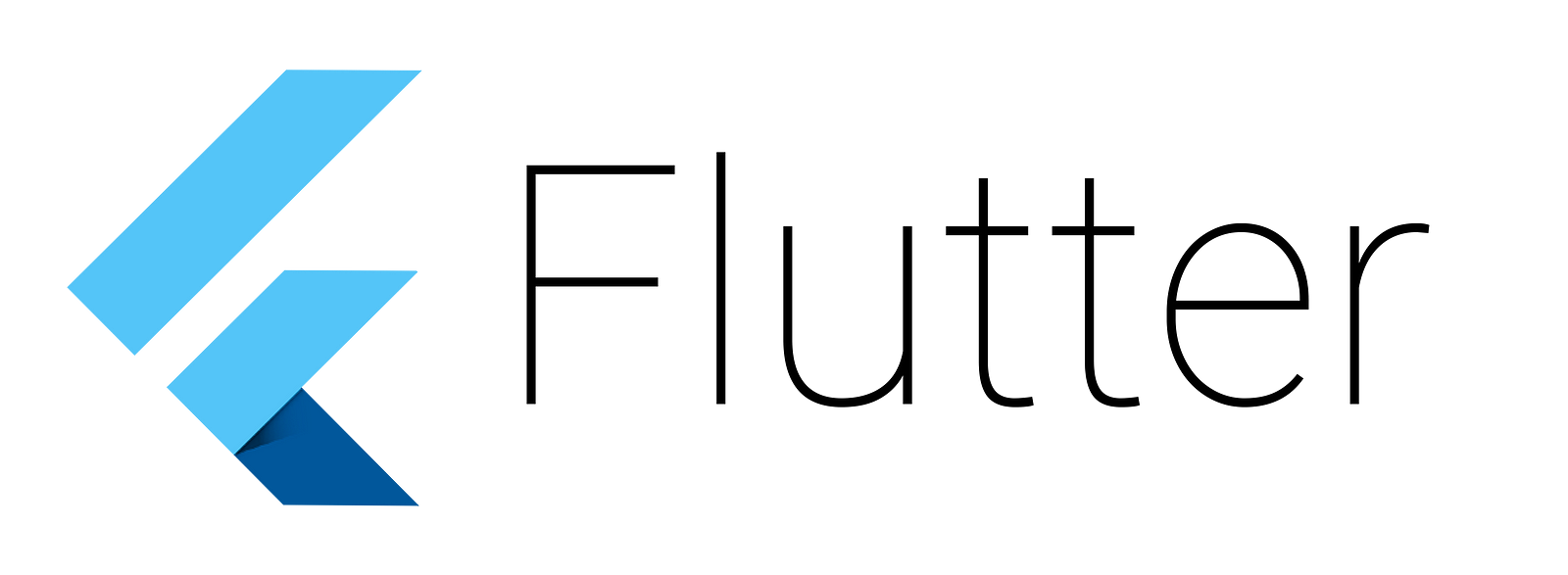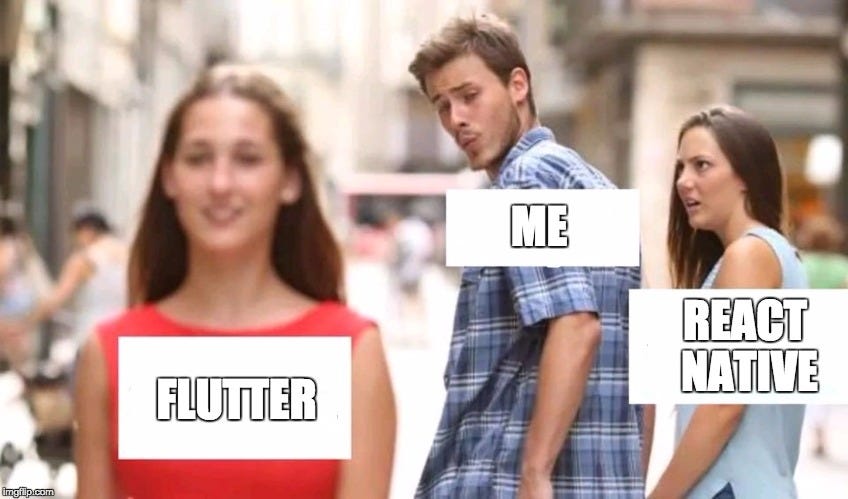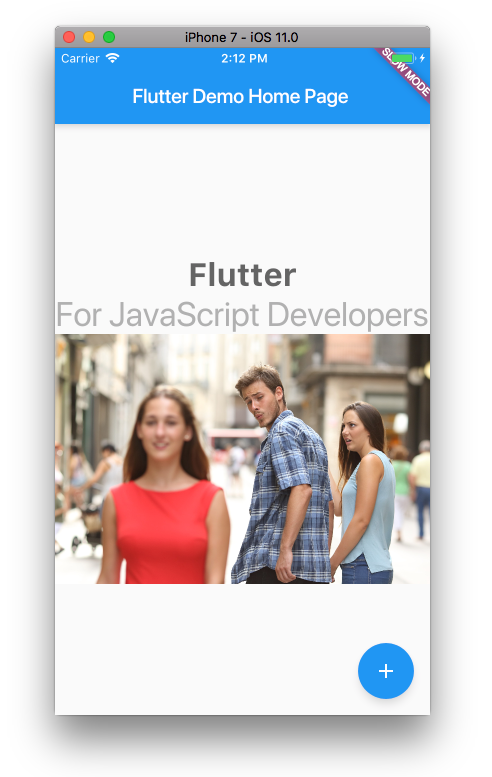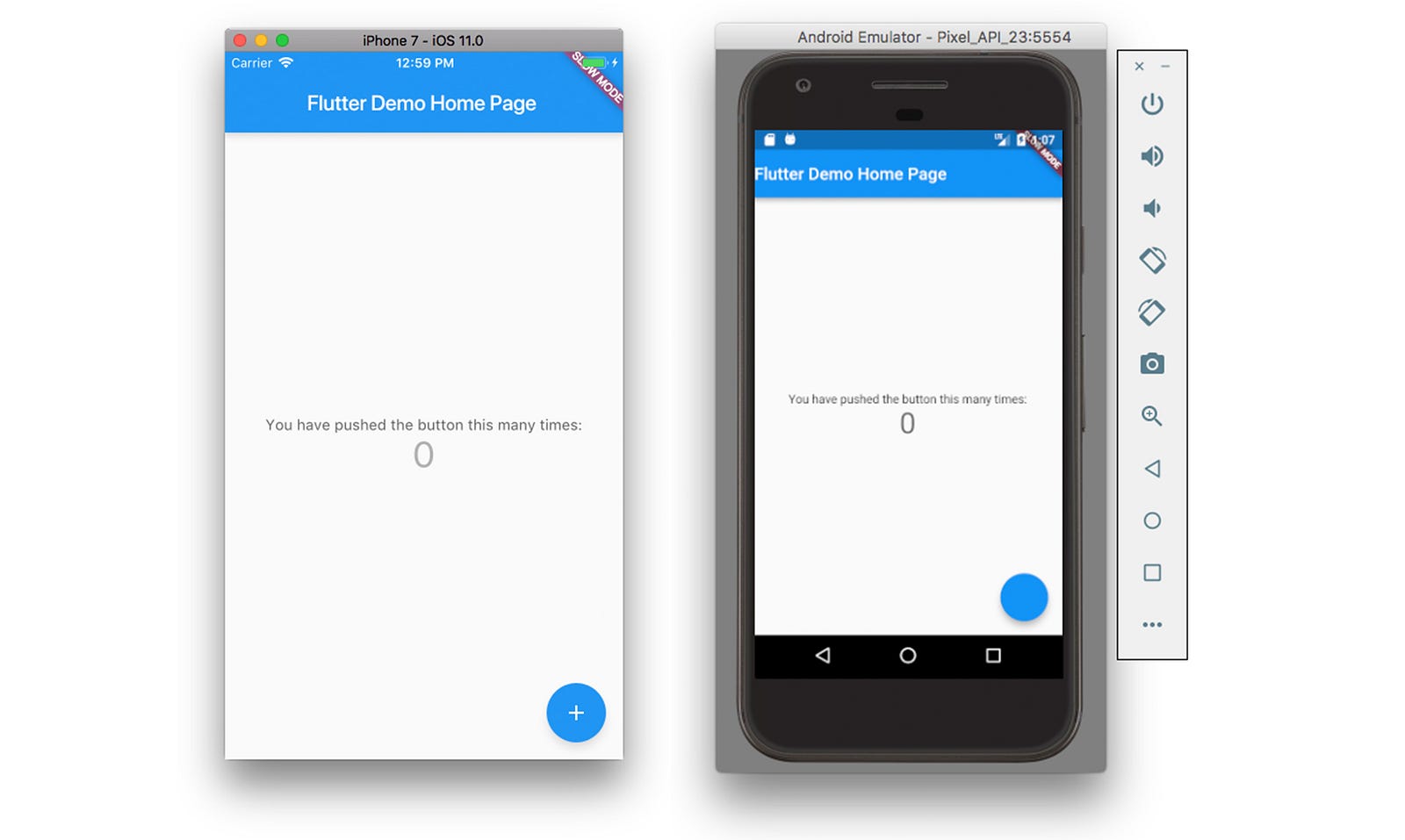Flutter is a cross-platform mobile app SDK for building high-performance, high-fidelity, apps for iOS and Android, from a single codebase.
Also from the docs:
Flutter includes a modern react-style framework, a 2D rendering engine, ready-made widgets, and development tools.

This post will hopefully be a quick and easy intro for most JavaScript developers as I will attempt to draw a parallel between JS and the npm ecosystem, and working with Flutter / Dart and the Pub package repository.
If you’re interested in staying up to date on Flutter tutorials, libraries, announcements, and updates from the community, I suggest signing up for the bi-weekly Flutter Newsletter that I just announced.
In my talk React Native — Cross Platform & Beyond at React Native EU I discussed and demoed a few different technologies within the React Ecosystem including React Native Web, React Primitives, and ReactXP, but I also had the opportunity to discuss Weex and Flutter.
Of all the front-end technologies I have looked at in the past few years, I am most excited about Flutter after experimenting with it. In this post, I will discuss why and also give an intro of how you can get started with it as quickly as possible.
If you know me, then I know what you are thinking…

I’m a React and React Native developer of over 2.5 years. I’m still extremely bullish on React / React Native and know of pretty massive adoption that is going on right now among many large companies, but I always enjoy seeing other ideas and looking at alternative ways to go about achieving similar goals / objectives, whether it be to learn from them or to shift my current platform.
Flutter
My tldr is this: Flutter is amazing and I see it being a viable option in the very near future.
After using the SDK over the past couple of weeks, I’m in the process of building my first app using it, and am really liking the process so far.
Before I go into how to get started with Flutter, I will first go over what my opinions are on the pros and cons of the SDK.

Pros:
- Built in UI libraries (Material, Cupertino) maintained by the core team.
- Dart & Flutter team work closely together to optimize the Dart VM for mobile specifically for the Flutter needs.
- Documentation is pristine / awesome / amazing ?.
- Nice cli.
- Smooth and easy for me to get up and running without running into many roadblocks / bugs.
- Debugging experience is good with hot reloading enabled out of the box plus an array of debugging techniques well documented.
- Pretty solid and opinionated navigation library built and maintained by the core team
- The Dart language is 6 years old and mature. While Dart is a class-based object oriented programming language, if you’re into functional programming, Dart does has first-class functions and supports many functional programming constructs.
- Dart was easier for me to pick up on than I had anticipated, and I came to really enjoy it.
- Dart is a typed language out of the box without any additional configuration (re: TypeScript / Flow).
- Has a similar paradigm of working with state that you may be used to if you have used React (i.e. lifecycle methods and
setState).
Cons
- You’ll need to learn Dart (which is easy, trust me)
- Still in alpha.
- Only targets iOS and Android.
- The plugin ecosystem is young, with only 70+ packages for Flutter in https://pub.dartlang.org/flutteras of September 2017
- Layout / styling is a completely new paradigm / API to learn.
- Different project configuration setup to learn (pubspec.yaml vs package.json).
Getting Started / Other Observations
- I’m using VS Code as my editor with the Dart Code extension which has let to a really nice development experience. The flutter documentation highly recommends though the IntelliJ IDE which has some built in support for things like hot / live reloading that VSCode doesn’t have to the best of my knowledge.
- There is a module system / package management system that is much different than that of npm, the Pub Dart Package Manager. This could be a good or bad thing depending on your view of npm.
- I started with no knowledge of Dart and picked it up fairly quickly. It reminds me a lot of TypeScript and also bears some resemblance to JavaScript.
- There are a few really great CodeLabs and tutorials in the documentation that helped me tremendously, and I recommend checking them out: 1. Building UIS 2. Adding Firebase 3. Building Layouts 4. Adding Interactivity
Enough talk, let’s get started creating a new project!
Installing the CLI (macOS)
To get started on Windows, check out these docs.
To see full macOS setup instructions, check out these docs.
First, we need to clone the repository that contains the binary for the flutter CLI and add it to our path. I cloned this repo into a folder where I keep my binaries and then added a new path to my $HOME/.bashrc / $HOME/.zshrcfile.
- Clone repo:
git clone -b alpha https://github.com/flutter/flutter.git2. Add path:
export PATH=$HOME/bin/flutter/bin:$PATH (or whatever the path is to your installation)
3. Run flutter doctor from your command line to make sure flutter path is being recognized and to see if there are any dependencies you need to install to complete the setup:
flutter doctor
Installing other dependencies
If you would like to deploy for iOS, you must have Xcode installed, and for Android you must have Android Studio installed.
To learn more about installing each platform, see the documentation here.
Creating your first Flutter app
Now that we have the flutter CLI installed, we can create our first app. To do so, we need to run the flutter create command:
flutter create myapp
This will create a new app for you. Now, change into the new directory and open either an iOS simulator or android emulator, and then run the following command:
flutter run

This will launch the app in a simulator that you have open. If you have both iOS and Android simulators open, you can pass in the simulator in which you want the app to run in:
flutter run -d android / flutter run -d iPhone
Or to run in both run
flutter run -d all
You should get some information about reloading the app printed to your console:

Project Structure
The code that you are running lives in the lib/main.dart file.
You’ll also notice that we have an android folder and an iOS folder where our native projects live.
The configuration for the project lives in the pubspec.yaml file, which is similar to a package.json file in the JavaScript ecosystem.
Let’s now take a look at lib/main.dart.
At the top of the file we see an import:
import ‘package:flutter/material.dart’;
Where does this come from? Well, in the pubspec.yaml file, you’ll notice under dependencies we have a single flutter dependency, that we are referencing here as package:flutter/. If we want to add and import other dependencies, we need to update our pubspec.yaml with the new dependencies, making them then available as imports.
In this file, we also see that there is a function at the top called main. In Dart, main is the special, required, top-level function where app execution starts. Because flutter is built using Dart, this is also our main entry point to the project.
void main() {
runApp(new MyApp());
}
This function calls new MyApp() which itself calls a class and so on and so forth, similar to a React app where we have a main component that is composed of other components, then rendered in ReactDOM.render or AppRegistry.registerComponent.
Widgets
One of the core principles in the technical overview of Flutter is that “Everything is a Widget”.
Widgets are the basic building blocks of every Flutter app. Each widget is an immutable declaration of part of the user interface. Unlike other frameworks that separate views, controllers, layouts, and other properties, Flutter has a consistent, unified object model: the widget.
In terms of web terminology / JavaScript, you can think of a Widget similar to how you may think about a component. The widgets are usually composed inside of classes that may or may not also have some local state and methods within them.
If you look at main.dart, you will see references to classes like StatelessWidget, StatefulWidget, Center, and Text.These are all considered widgets. For a full list of available Widgets, see the documentation.
Layout and Styling
While Dart and most of the Flutter framework has been pretty easy grok, working with Layouts and styling was at first a little harder to wrap my head around.
The main thing to keep in mind is that unlike web styling, and even React Native styling where Views perform all layout and also perform some styling, Layout is determined by a combination of the type of Widget you chooseand its layout & styling properties, which are usually different depending on the type of Widget you are working with.
For example, the Column takes an array of children and not any styling properties (only layout properties such as CrossAxisAlignment and directionamong others), while Container takes a combination of layout and styling properties.
There are even layout components such as Padding that take a child and do nothing notable other than adding padding to a child component.
There is an entire catalog of Widgets that can help you achieve the type of layout you would like, with components like Container, Row, Column, Center, GridView and many others, all with their own layout specifications.
SetState / Lifecycle methods
Similar to React, there is the idea of Stateful and Stateless widgets or components. Stateful widgets can create state, update state, and destroy, being somewhat similar to the lifecycle methods you may be used to if you’ve worked with React.
There is even a method called setState which updates the state. You can see this in action in the _incrementCounter method in the project we just generated.
See StatefulWidget, State, and StatelessWidget.
Consensus
As someone who specializes in cross-platform application development, I’ve been keeping my eye out for a competent competitor to React Native that would be a viable option for clients that maybe wanted something different for whatever reason. I think that Flutter answers some of the concerns of some of my clients regarding things like a built in type system, a first class UI library, and also a promising navigation library that is maintained by the core team.
I will be adding Flutter to my toolbelt so when I run into a problem or situation that React Native does not answer I will have something else to fall back on. I will also be presenting it to my clients once I have shipped my first app as another option for them to choose up front, as long as I feel it is production ready.
My Name is Nader Dabit . I am a Developer Advocate at AWS Mobile working with projects like AppSync and Amplify, and the founder of React Native Training.
If you like React and React Native, checkout out our podcast — React Native Radioon Devchat.tv.
Also, check out my book, React Native in Action now available from Manning Publications
If you enjoyed this article, please recommend and share it! Thanks for your time
Source: https://hackernoon.com/flutter-for-javascript-developers-35515e533317
Written by
Nader Dabit
Developer Advocate at AWS Mobile — Specializing in Teaching and Building React & React Native — http://reactnative.traininghttps://aws.amazon.com/mobile
Hacker Noon
how hackers start their afternoons.